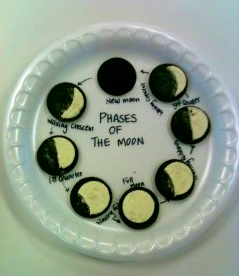
or to developing from a seed to a full grown plant.
Here is a summary of my learning the various Web 2.0 Tools plus Oops! - forgot to put in vimeo.

At the beginning, I learned to blog. Then I tried embedding a YouTube video. In the blog, Explosion of New Literacies, the video, "Not the Old Chalkboard," relates the change taking place in the schools and the importance that schools must get on board using technology to help students.
The next step in this class entailed making an animoto. I made two; one about the moon phases and another about the Wampanoag.
Then, I explored a voki, which was fun. I can see using this frequently in the classroom. I read in Taina's Blog that she used vokis as a way for students to record facts about topics.
After that, I played with embedding Pixton which is a cartoon. I think cartoons can explain thinking in a concise, but succinct manner. A creative way to summarize student learning is through a Wordle although mine came out too small. Here is one related to the Common Core Standards.

Learning how to use Diigo will definitely pay off with all the initiatives taking place in education today. New Technology Standards are being implemented for teachers and students.
In the final phases of this class, I contributed to a page in the group wiki about folktales. Then my students created their own wiki pages about the planets.

Last, but not least, was the digital story telling project. My students starred in a movie which will be shown in class on Tuesday and they were recognized at an all school assembly for performing this play.
I'm sure this is how my computer felt about me. What was your experience like?






























.JPG)

